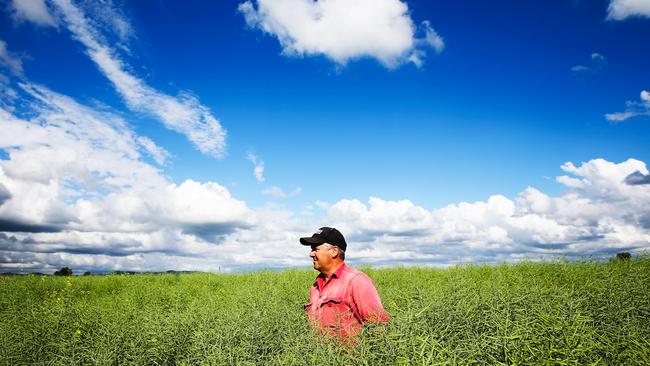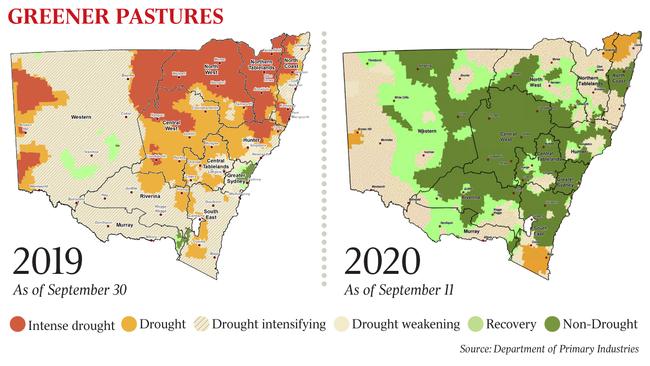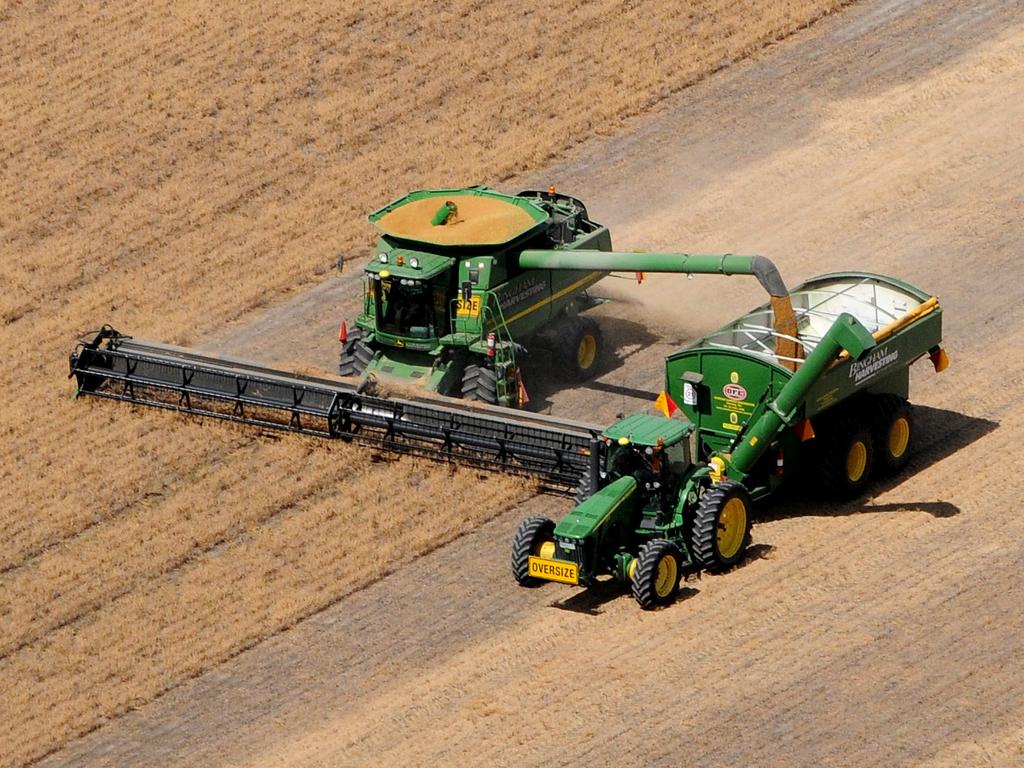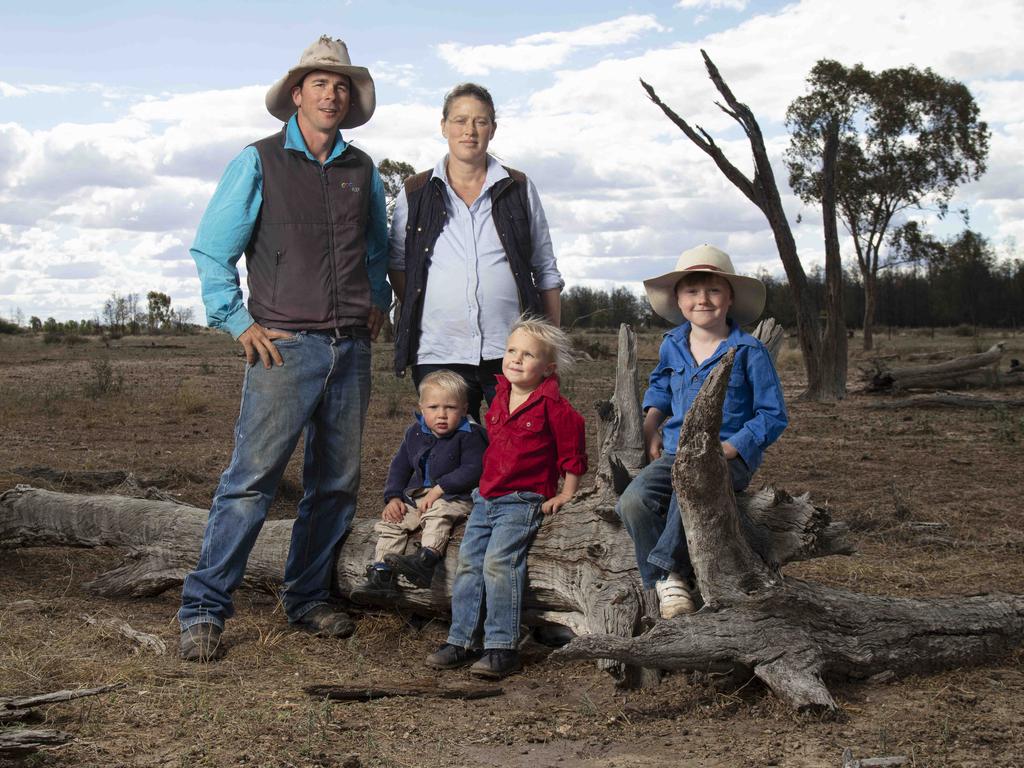Harvest hopes as high as an elephant’s eye
Farmers across large swaths of the country are set for their best harvest in three years, with heavy rainfall across NSW dragging the state out of prolonged drought.

Farmers across large swaths of the country are set for their best harvest in three years, with heavy rainfall across NSW creating a bumper crop and dragging the state out of prolonged drought.
Just 3 per cent of NSW remains in drought, a significant reversal from the same time last year when 97.2 per cent of the state was in some way affected by drought, official figures show.
That rebound has pushed Australia’s grain production to its highest level since 2017, with 60 per cent of that increase from NSW, the Australian Bureau of Agricultural and Resource Economics found.
For Liverpool Plains farmer John Hamparsum, the canola crop this year has been a welcome sight after three years of intense drought and poor harvests. “It’s raining money at the moment,” Mr Hamparsum, who also grows wheat, said on Sunday.
“We went through the drought when we had no proper rain.
“We had zero income but lots of outgoings. For us, it will be just what the doctor ordered.”
Despite production growing strongly, ABARES economists Andrew Cameron and Charley Xia have warned there is unlikely to be any immediate increase in the value of the harvest. That’s because livestock herds and flocks need to be rebuilt — and because agriculture prices have fallen.

Beef and veal prices are down 5 per cent, and wheat down 21 per cent, their research shows.
For now, according to National Farmers Federation chief executive Tony Mahar, the rain has been “hugely positive and encouraging” for the regions.
“While extremely challenging in some ways, 2020 has been a real upturn for the industry because of the widespread rain across the country,” Mr Mahar said. “It has given farmers a huge sense of optimism and relief after a series of really tough years.
“We want (the government) to continue to develop their drought policy so that when the next drought comes, and it will, we are much better placed,” he said. “To drive around and see the beauty colours of the wheat and the barley and the canola, there’s such a good feeling in the industry at the moment.”
In NSW, the Department of Primary Industries records only Broken Hill, parts of the Northern Rivers and the far south coast in drought.
About a third of the state is classified as “drought-affected”.
Despite winter starting with below average rainfall, a number of low pressure systems from mid-July brought heavy rain and even flooding across the coast.
Overall, the state’s winter rainfall was 5 per cent above the historical average, and the wettest since 2016.
Even Broken Hill, still in drought, was lashed with more rain than a month’s worth at the weekend, the heaviest downpour the town in the state’s far west had seen in two years.
In Queensland, it’s a different story: more than 67 per cent of the state is in drought, from the NSW border to Boulia Shire in the west and the Whitsundays in the east.
Farmers in both Queensland and NSW could have more good news with the likely development of a La Nina, last strongly felt in 2010-12, bringing more wet weather over summer.
Tim Hunt, Rabobank’s head of food and agribusiness research, said the bigger harvest would go some way to offsetting the damage done by the coronavirus pandemic and deteriorating trade relationships with China, a major buyer of Australia’s agricultural commodities.
The agribusiness lender’s latest national farm survey this month found confidence had continued to fall after beginning the year at close to a record five-year high. About 24 per cent of farmers expected conditions to improve over the next year, with those in beef, grain, cotton and dairy the most optimistic.
Farmers in NSW, where confidence fell slightly, recorded the highest levels, while Queensland and Tasmanian producers were more optimistic.
Mr Hamparsum said years of false promises of drought-breaking rain has made him cautious, and cynical of forecasts, and more rain was needed. “We still have a long way to go,” he said.
“The dams aren’t full, the rivers just started flowing and our soils aren’t full of water just yet.
Even the La Nina was a double-edged sword, Mr Hamparsum said. “With climate change, we see more extremes of everything. It could be so wet we lose our props to flood … those extremes put a damper on things.”








To join the conversation, please log in. Don't have an account? Register
Join the conversation, you are commenting as Logout